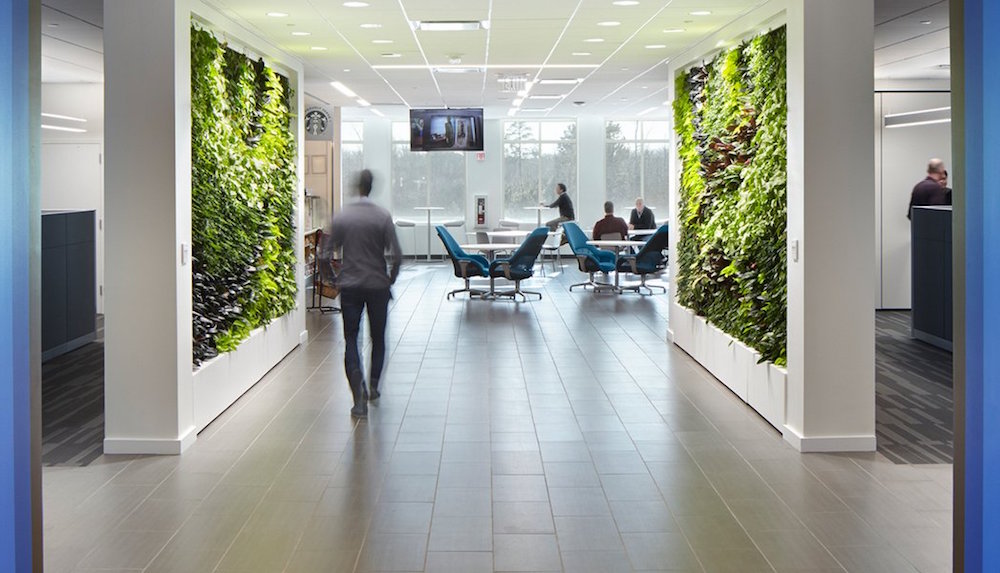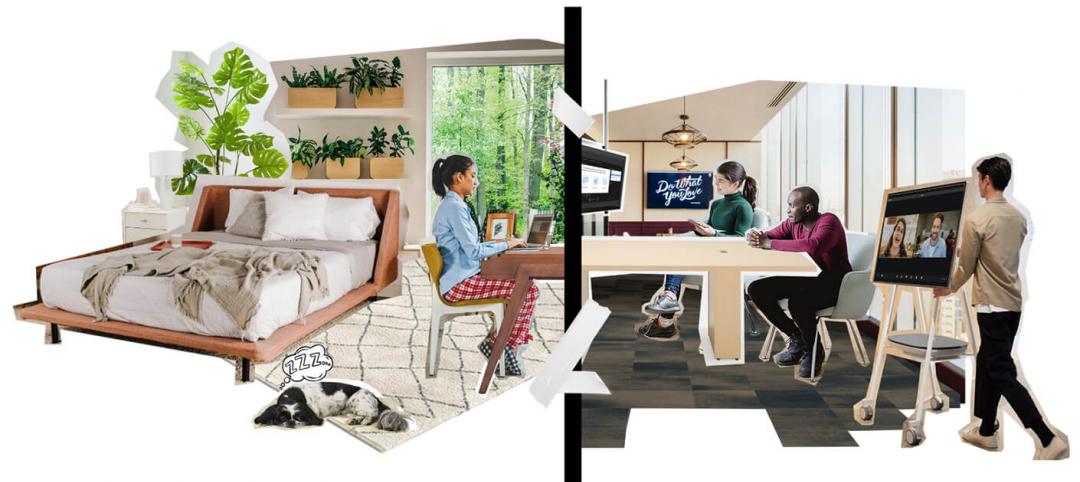When we talk about designing for climate adaptation, we first and foremost concern ourselves with the preservation and protection of human life. While the understood goal of resilient buildings is to physically protect both the property and the people, resiliency can also have positive mental health effects for building occupants. Knowing that increased stress levels have been found to directly cause greater psychological issues including suicide, domestic abuse, and other destructive behaviors, my colleague, David Cordell, and I set out to explore how the interior environment could actually reduce mental distress.
Stress occurs before, during, and after a crisis event. Factors outside of a building can contribute to stress as much as the interior environment. Inability to communicate with loved ones will certainly cause anguish for a family member. Lack of access to potable water and food have physical impacts but can also cause mental strain. While building occupants may not always have much advance notice of an acute event (such as an earthquake or tornado), there are ways the design of a space can impact the mental health of the occupants in those before, during, and after timeframes. Knowing an event will occur in the near future (such as a predicted hurricane) may allow physical preparations to occur, but having that advance notice may actually increase stress levels as one awaits the storm.
Our research project, Weathering the Storm: Mental Health and Resilient Design, proposed links between specific design strategies and the positive psychological benefits they may provide when building occupants are faced with a crisis event. Several studies have already shown direct access to nature and natural elements relieves stress. Installing a green roof on a building provides a number of sustainability benefits—stormwater management, creation of wildlife habitat, decreased urban heat island effect—but such an area can also ease depression and reduce stress levels if available as an outdoor refuge to building occupants who may need to shelter-in-place. Green roofs can also be used to cultivate fruits and vegetables, offering both nutrition and mental reassurance.
Other strategies for resilience planning involve design elements coupled with operations policy. A building may choose to provide alternate transportation options to occupants for use in times of stress. In a flood-prone area, inflatable rafts and air pumps stored on a floor above the projected flood plain may offer a way home (and access to loved ones) during extreme precipitation or storm surges. It also offers a way to retrieve supplies for occupants sheltering during such an event.
Communication of these measures to occupants is also an important factor for reducing stress. Occupants need to know what safeguards the building has in place and be comfortable employing them. When these and other strategies are communicated to building occupants, we believe there may be a lessening of anticipatory stress as people know there are means in place to help them during a crisis event.
Why do we care? What is the true benefit? Mental health is a major factor in quality of life, and improving it may lead to greater workforce productivity and reduced absenteeism. Certain design strategies can promote a greater sense of community connectivity. Employers may see reduced insurance costs related to psychological issues during and after crisis events. Residual or delayed stress—that which stays with individuals long after an event has occurred (Post-Traumatic Stress Disorder, for example)—may even be staved off or lessened when occupants’ mental health is factored into planning for resilience to crisis.
By making our spaces more resilient and communicating that value to tenants, designers can contribute to the improved mental wellbeing of occupants. Protecting against loss of life and property is important, but it should not be the only factor in meeting site-specific vulnerabilities. As we increase awareness of design’s impact, occupants may even begin to seek out buildings that can flex with climate fluctuations. Who knows—we may see resilient design joining the ranks of roof decks and bike rooms as the hot new tenant amenity.
About the Author: Jon Penndorf is a project manager and sustainability leader in Perkins+Will’s Washington, DC office. He is involved in the management and design of a variety of project types, from focused interior renovations to energy management across a full real estate portfolio. Jon is a recipient of the AIA’s Young Architect Award, the 2012 president of the AIA’s DC chapter, and the 2014 chair of the AIA’s Young Architects Forum advisory committee. With over 12 years of professional experience, Jon is engaged in many areas of the architecture community including community leadership, writing, and education.
More from Author
Perkins and Will | Sep 19, 2023
Transforming shopping malls into 21st century neighborhoods
As we reimagine the antiquated shopping mall, Marc Asnis, AICP, Associate, Perkins&Will, details four first steps to consider.
Perkins and Will | Jul 20, 2023
The co-worker as the new office amenity
Incentivizing, rather than mandating the return to the office, is the key to bringing back happy employees that want to work from the office. Spaces that are designed and curated for human-centric experiences will attract employees back into the workplace, and in turn, make office buildings thrive once again. Perkins&Will’s Wyatt Frantom offers a macro to micro view of the office market and the impact of employees on the future of work.
Perkins and Will | May 30, 2023
How design supports a more holistic approach to training
For today’s college athletes, training is no longer about cramming team practices and weight lifting sessions in between classes.
Perkins and Will | Dec 20, 2022
4 triage design innovations for shorter wait times
Perkins and Will shares a nurse's insights on triage design, and how to help emergency departments make the most of their resources.
Perkins and Will | Aug 30, 2021
The great re-shuffle & re-think
In this new hybrid environment in which we cater to how our employees work best, how will we manage new hybrid work practices and etiquette?
Perkins and Will | May 18, 2020
Global design firms collaborate on new COVID-19 mobile testing lab to bring testing to vulnerable communities worldwide
Perkins and Will, Schmidt Hammer Lassen Architects, and Arup Group develop scalable solutions for increased testing capacity within high-density and under-served neighborhoods.
Perkins and Will | Jun 7, 2019
Workplace wellness: Top 3 tips for Fitwel certification
How can thoughtful design encourage healthier choices, lifestyles, and work environments?
Perkins and Will | Feb 27, 2019
ResilientSEE: A framework to achieve resilience across scales
Conceived in the Boston studio of Perkins+Will, the ResilientSEE team developed a resilient planning framework that can be applied to other neighborhoods, cities, and countries.
Perkins and Will | Nov 28, 2018
Amazon HQ2 and the new geography of work
The big HQ2 takeaway is how geography and mobility are becoming major workplace drivers.
Perkins and Will | Sep 4, 2018
It takes more than money to fund resilience
Resilient design, much like all projects in the built environment, requires funding.
















